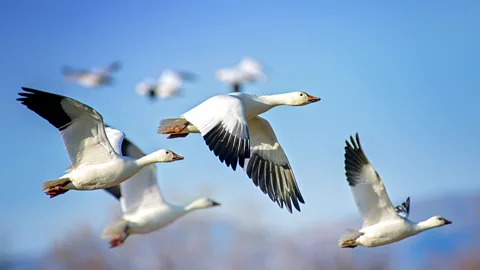
Some bird species, like geese, save energy by flying in close formation. Airliners could use a similar technique to burn less fuel.
In the early 1500s, Italian Renaissance master Leonardo da Vinci became fascinated with how birds fly. He spent his days carefully studying their movements, sketching how they keep their balance and perform soaring maneuvers.
His goal was to create a flying machine from his scientific studies. Instead, he produced the important work, Codex on the Flight of Birds. This work laid the groundwork for what would later become "biomimicry," the study of nature to find efficient designs.
Centuries later, experimentation thrived. Pioneering aviators like Otto Lilienthal, Igo Etrich, and the Wright brothers copied birds to design their aircraft, leading to the birth of the aviation industry.
In 2019, Airbus revisited the study of birds with the "fello'fly" project to understand how migrating geese save energy by flying in a V formation. From this, a "wake energy retrieval" technique was developed to help trailing jets find the best position to fly in the wake vortex of a lead jet. This was found to save 5% to 10% of fuel per trip, similar to findings published by NASA.
In July 2023, the effort evolved into the Geese project with €10m (£8.4m/$10.5m) in funding and support from the European Union's air traffic management research arm, Sesar. Earlier this month, Delta Air Lines and Airbus announced they would take the "fello'fly" concept from the lab to the skies, aiming to implement the technique in live operations in the second half of this year. The goal is to test a maneuver called "rendez-vous," where two passenger jets pair over the Atlantic Ocean. For example, this could involve an Air France flight from New York City and a Delta Air Lines flight from Miami, both heading to London. In pairing, the two planes would maintain the regulatory 1,000ft (303m) altitude separation while trying to reduce the distance between them to 1.2 nautical miles (2.2km), the same distance where fuel savings were recently achieved in the lab.
Delta's chief sustainability officer, Amelia DeLuca, tells the BBC that this distance is much closer than the current separation of three to five nautical miles (5.5 to 9.2km), so the first step will be to see if the gap can be narrowed without compromising safety.
